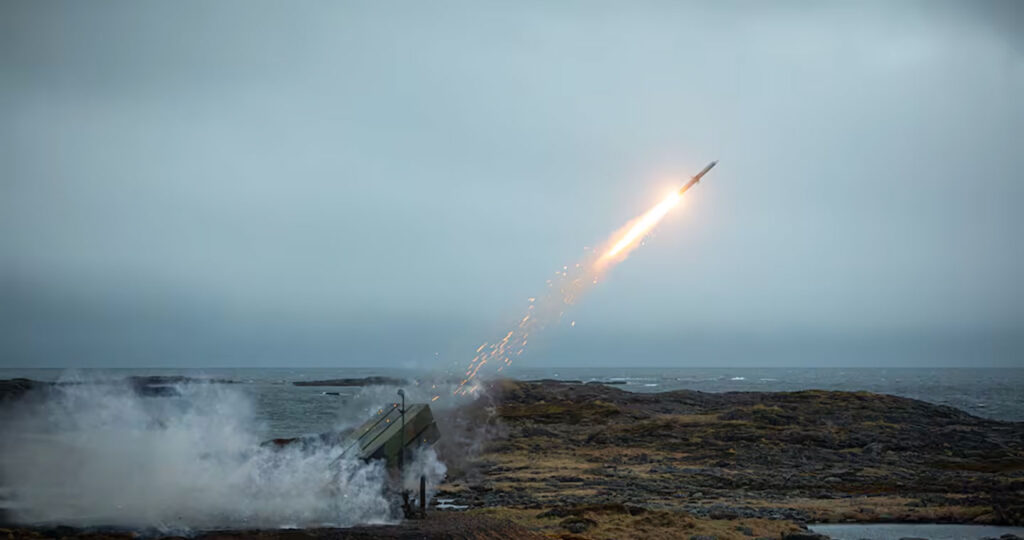Denmark will lease a NASAMS air defense system from a Norwegian company to restart its own air defense capabilities after shuttering its program in 2005. ROYAL NORWEGIAN NAVY
In the face of an increasing threat, Denmark announced in July 2025 that it would restart its air defense system, which the NATO member had shut down two decades ago. The Danish government said it would acquire three different air defense systems, including leasing a Norwegian system, highlighting an increasingly close military relationship between the Nordic nations.
The Danish Ministry of Defence already had announced plans to acquire the German-made Iris-T surface-launched medium-range system and the VL Mica from French manufacturer MBDA, according to Defense News, a website focused on military affairs. Denmark also will lease a National Advanced Surface-to-Air Missile System (NASAMS) from a Norwegian company, Kongsberg, which partners with the U.S. defense contractor Raytheon on the system.
Denmark has indicated it will decide on a permanent system later this year, the website reported. “As a link between nations and Norwegian industry, we are now ensuring that Denmark has a proven NASAMS capability in place while they work on a permanent solution – this is another example of strong Nordic defense cooperation,” Maj. Gen. Oyvind Johan Kvalvik, deputy director of the Norwegian Defence Materiel Agency, said in a statement. The Norwegian Air Force will train Danish Soldiers to operate the system later this year.
Unlike larger units such as the Patriot missile defense system, NASAMS is considered a “more affordable, scalable solution suitable for defending cities, military bases, and strategic locations from a variety of threats,” according to Defense Feeds, a defense and national security publication. NASAMS can be customized with a mix of radars, launchers and command centers dispersed over a wide area, making it easier to survive attacks. NASAMS is compatible with many kinds of missiles up to extended-range varieties. The digitally connected system can detect, track and engage multiple targets at the same time, making it effective against drones, low-flying cruise missiles, helicopters and fighter aircraft, the site reported.
Since the Russian invasion of Ukraine in February 2022, the Nordic countries have integrated their air forces and defense strategies. Meanwhile, Finland and Sweden have joined NATO, greatly increasing NATO’s capabilities in defending the alliance’s northeastern flank and providing a domain presence and monitoring reach in the Arctic. Denmark also has significantly increased defense spending in the past two years. In February, the Danish government announced a defense boost of a little over $7 billion to its budget or about 3% of the country’s gross domestic product (GDP). The country made additional spending commitments at NATO’s June summit. “We need to be able to invest in and build-up fighting capability at increased speed. We only have a limited influence on production times, but if we use our right to award contracts directly, we can save time,” stated Danish Defence Minister Troels Lund Poulsen, according to Defense Post, a military affairs site. “Further, we have to deepen our cooperation with the industry and close allies, educating and training ourselves in the use of the equipment, so that we are ready to use it when it is delivered.”
Denmark in July also began conscripting women for military service to secure adequate force strength as tensions escalate in the Baltic and North Seas, with multiple Russian-linked maritime sabotage incidents since 2023.

